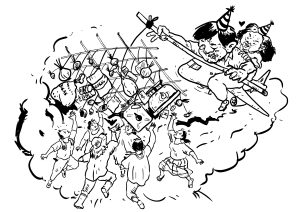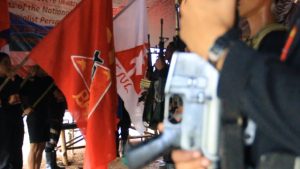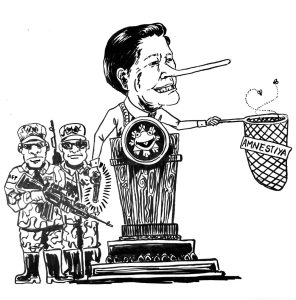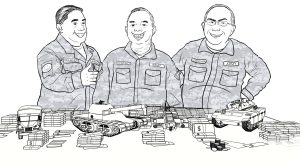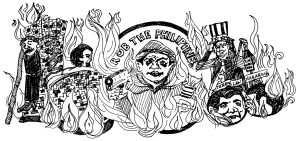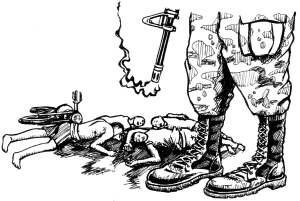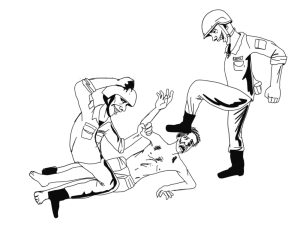NLUA: Expansion of saleable land

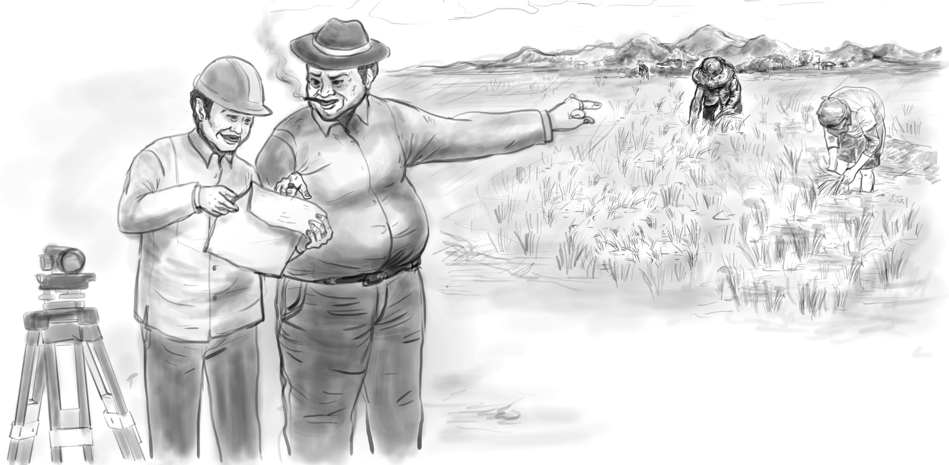
During his last state of the nation address, Ferdinand Marcos Jr once again declared the National Land Use Act (NLUA) as a priority measure of his regime. Under this proposal, the state will review the use of land purportedly for comprehensive development. It aims to consolidate land classification into the following: protected land, land for production, for housing and for infrastructure. This will cover all the country’s land, water and natural resources.
The proposal is framed along the neoliberal land scheme promoted by imperialist agencies such as the World Bank. It aims to expand the Philippines land market and offer land to international market speculation. This will give a new impetus to widespread land grabbing where millions of farmers, farm workers, indigenous groups, fisherfolk and other small producers will be displaced from their land or denied their livelihood.
Land reclassification under the guise of land-use consolidation or management policies is not new. Since 1994, several attempts have been made to have Congress enact this into a law. It is supported by big bourgeoisie organizations, such as the Chamber of Real Estate and Builders’ Associations, big landlords and bureaucrats.
Still, even without a law, Marcos had already cleared the way for the local bourgeoisie to accelerate monopolization of the land that would enter the market. On July 3, he signed Executive Order No. 34 which allows construction of subdivisions and commercial centers in all “idle” public lands.
In the proposal’s most recent version in Congress, its proponents used fancy words like “ridge-to-reef” or “watershed ecosystem management” that pretend to protect nature and fight climate change. This is to cunningly permit foreign companies to use farms, oceans and forests for the construction of large energy plants under the guise of renewable energy.
The NLUA will expand the coverage of schemes that ease the transfer of land ownership. These include clearing individual titles by forgiving farmers’ debt and individualization of collective titles under the World Bank’s SPLIT program. Both remove obstacles to selling distributed land for easier grabbing by big local and foreign businessmen and their bureaucrat partners.
The NLUA proposal is the opposite of agrarian reform. At its core is facilitating the conversion of vast agricultural lands for various industrial and commercial use. In fact, it does not have a separate category for agriculture to ensure the country’s food security. The only “agricultural land” recognized by the NLUA are those categorized under the bogus Comprehensive Agrarian Reform Program (CARP). According to state data, there are approximately 12 million hectares of land considered agricultural. Only more than seven million of these are under CARP. Many parts have already undergone land-use conversion.
Farmers are aware that government uses land reclassification to make it easier to exempt land from conversion or declassifying farmlands as agricultural to subject them to buy-outs. Even now, farmers are having a hard time maintaining their land due to high rent and production costs, and being short-changed with low farmgate prices and lack of state support. This situation is exacerbated by rampant legal importation and smuggling of agricultural products.
With the renewed push for the NLUA, the Marcos regime hopes to raise more revenue from land speculation and contracts and gain favors from the construction of housing, roads and bridges, power plants, dams and other infrastructure projects. It also hopes to reap big from the expansion of commercial plantations and mines to lands which the proposal will open up.


